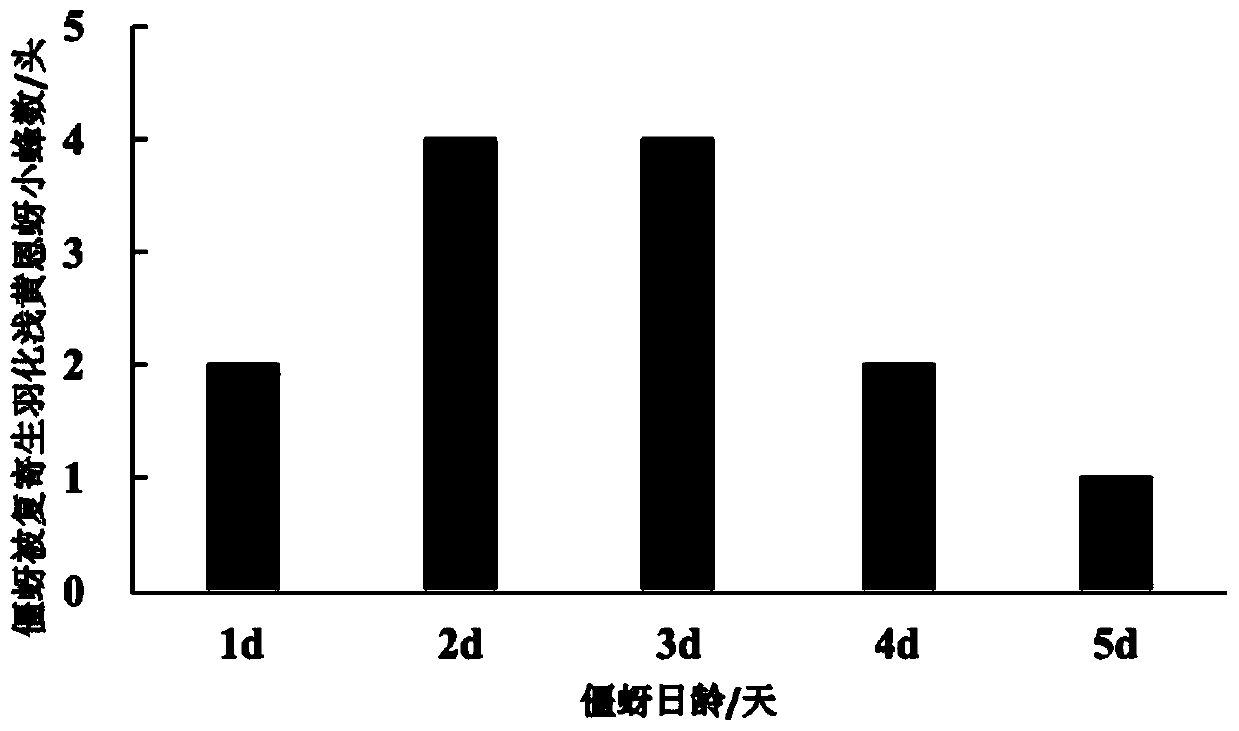Method for breeding male encarsia sophia by using trioxysrietschel
A technology for the drones of Aphids aphids and Aphis aphids, which is applied in animal husbandry and other fields, can solve the problems of late occurrence, low reproductive rate and stable number of female bees, and achieves easy operation, good control effect, and easy operation. The effect obtained
- Summary
- Abstract
- Description
- Claims
- Application Information
AI Technical Summary
Problems solved by technology
Method used
Image
Examples
Embodiment 1
[0024] Example 1 Propagation of the Drone Aphidia spp.
[0025] (1) Cultivation of host plant cotton
[0026] Cotton seeds are sown in a seedling tray with a nutrient substrate for cultivation, 1 seed / hole, and the nutrient substrate is composed of vermiculite, flower nutrient soil and soil; the volume ratio of vermiculite: flower nutrient soil: soil is 1 -1.5:2-4:3-5; Regularly check the germination of cotton seeds and the growth of seedlings, and maintain the humidity of the nutrient matrix in the seedling tray. When the cotton seedling plant grows to 1-2 true leaves, transplant it to a nutrient cup with a nutrient substrate for cultivation, 1 plant / cup, and wait for the cotton seedling plant to grow to 3-4 true leaves;
[0027] The cultivation of the host plant cotton is carried out in a greenhouse with sufficient light and controllable environmental conditions to ensure no pollution by diseases and insect pests, the temperature is 26±2°C, the relative humidity is 70-75%, ...
Embodiment 2
[0039] Example 2 Comparison of fecundity of male bees bred by the parasitic Aphidia breviparasitic Aphids aphids and Aphidia haidenii
[0040] 2.1 Insects to be tested
[0041] Host insect: Bemisia tabaci (Gennadius) type B
[0042]Parasitic wasps: Encarsia sophia (Girault&Dodd); Trioxysrietscheli (Mackauer); Eretmocerus hayati (Zolnerowich&Rose).
[0043] 2.2 Tested host plants
[0044] Cotton Gossypium spp (Hebei Zhongchuang Nongke Seed Industry Technology Co., Ltd., Xinke No. 8). The potted cotton is used when it grows to 4 true leaves.
[0045] 2.3 Experimental method
[0046] (1) Take cotton seedlings containing 50 2-3 instar cotton aphid nymphs and put them into insect cages, insert 5 pairs of A. When the wasp wasp developed to 2 days old, 30 unmated virgin female wasps of E. flavus were inoculated, and removed after 24 hours.
[0047] At the same time, the cotton seedlings carrying the 3rd-instar Bemisia tabaci nymphs were put into insect cages, and 5 pairs of A. ...
PUM
 Login to View More
Login to View More Abstract
Description
Claims
Application Information
 Login to View More
Login to View More - R&D
- Intellectual Property
- Life Sciences
- Materials
- Tech Scout
- Unparalleled Data Quality
- Higher Quality Content
- 60% Fewer Hallucinations
Browse by: Latest US Patents, China's latest patents, Technical Efficacy Thesaurus, Application Domain, Technology Topic, Popular Technical Reports.
© 2025 PatSnap. All rights reserved.Legal|Privacy policy|Modern Slavery Act Transparency Statement|Sitemap|About US| Contact US: help@patsnap.com



